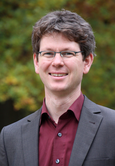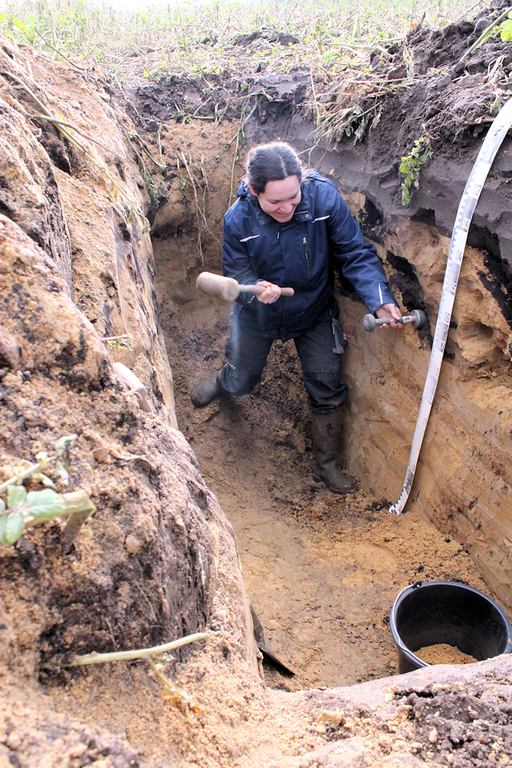Project
Soil carbon burial
![[Translate to English:]](/media/_processed_/a/7/csm_humusvergrabung_IMG_0408_1350px_763e228544.png)
Burial soil organic matter for C sequestration - potentials, processes and long-term effects
Soils contain the largest terrestiral pool of carbon and are thus of main importance for greenhouse gas emissions. In the project "Soil carbon burial" we analyze the potential of deep incorporation of soil organic matter for climate change mitigation.
Background and Objective
There are no dedicated long-term studies about the dynamic of buried soil organic matter. Thus, the aim of the project "Burial soil organic matter" is to invetigate the following questions:
- How much additional soil carbon can be sequestred by soil carbon burial?
- What is the long-term stability of buried soil carbon?
- What are the underlying processes and drivers for different soil organic carbon stability in subsoils as compared to topsoils?
- What is the turnover of buried carbon (radio-carbon dating)?
Land management practices have often led to organic matter burial. Croplands have been widely managed as ridge and furrow systems since the 12th century. With mouldboard ploughing in one direction, ridges were built up burying former topsoil underneath. With the invention of the steam plough, the ploughing depth continuously increased. Deep ploughing has been used for soil melioration in Podsols and Luvisols and later on also in peatland cultivation. During the 1960s dozens of agricultural field experiments on deep ploughing were set up in Northern Germany.
Ridge and furrwo systems and deep ploughed soils are used as sampling sites in this project.
Approach
Within the project experimental work will be conducted at 20 field sites throughout Central Europe. The sampling campain will be finished in Autum 2014 and will be followed by soil anlytics and incubation experiments.
We make use of old experimental sites with a paired design: a part of the field sites has been deep ploughed and the remaining part of the sites is used as reference. In the ridge and furrow systems comparisons between ridge and furrow and reference points at the originla soil surface are performed.
Links and Downloads
Thünen-Contact

Involved Thünen-Partners
Involved external Thünen-Partners
-
Technische Universität Braunschweig
(Braunschweig, Deutschland) - University of Copenhagen
(Kopenhagen, Helsingoer, Dänemark)
Funding Body
-
Deutsche Forschungsgemeinschaft (DFG)
(national, öffentlich)
Duration
10.2013 - 2.2017
More Information
Project funding number: DO-1734/2-1
Project status:
finished
Publications
- 0
Alcantara V, Don A, Well R, Nieder R (2017) Legacy of medieval ridge and furrow cultivation of soil organic carbon distribution and stocks in forests. Catena 154:85-94, DOI:10.1016/j.catena.2017.02.013
- 1
Alcantara V, Don A, Vesterdal L, Well R, Nieder R (2017) Stability of buried carbon in deep-ploughed forest and cropland soils - implications for carbon stocks. Sci Rep 7:5511, DOI:10.1038/s41598-017-05501-y
- 2
Alcantara V, Don A, Well R, Nieder R (2016) Deep ploughing increases agricultural soil organic matter stocks. Global Change Biol 22(8):2939-2956, DOI:10.1111/gcb.13289

![[Translate to English:] [Translate to English:]](/media/_processed_/6/4/csm_titel_CO2Kampagne8_afeea2273e.png)
![[Translate to English:] [Translate to English:]](/media/_processed_/4/1/csm_titel_93px_CO2Kampagne8_9b0f3354d4.png)

![[Translate to English:] Logo des Bundesministerium für Ernährung und Landwirtschaft](/media/allgemein/logos/BMEL_Logo.svg)